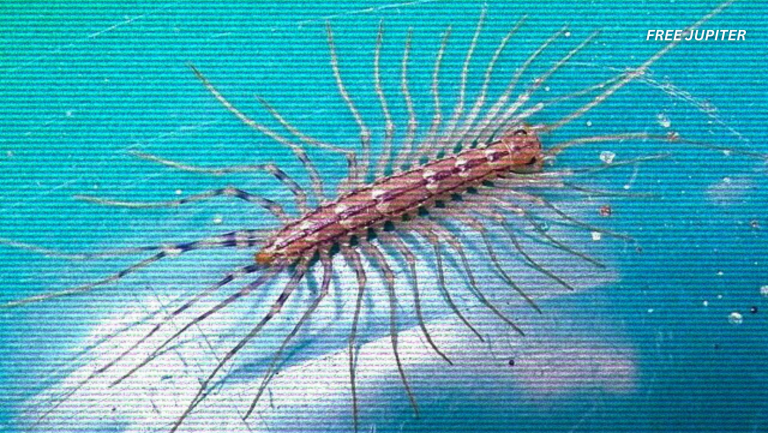The modern human genome is far from a pure strand of Homo sapiens DNA. In fact, hidden within many of us is a genetic echo from an ancient chapter of human history—our close evolutionary cousins, the Neanderthals. These archaic humans, who thrived across Europe and parts of Asia until about 40,000 years ago, interbred with Homo sapiens during periods of coexistence. As a result, the legacy of Neanderthals lives on within many modern-day people, particularly those of European descent, with some individuals carrying up to 4% of their DNA from these ancient ancestors.
As scientific tools evolve, so too does our understanding of what those ancient genes may influence in the present day. Traits once attributed to mere coincidence or general variation are now being traced back to the mingling of ancient bloodlines. Interestingly, many seemingly unrelated features ranging from physical characteristics to disease susceptibility and even behaviors have been linked to the presence of Neanderthal DNA.
Below are seven intriguing signs that may suggest you carry a genetic inheritance from the Neanderthals. While none of these traits alone provide definitive proof (only a DNA test can do that), they offer a fascinating glimpse into how our ancient past still shapes who we are today.
1. A Long, Prominent Nose
While people often consider the size of the nose in terms of width or overall proportion, Neanderthal genetic influence appears more specifically related to nose length. Evolutionarily speaking, this characteristic served a purpose. Neanderthals thrived in Ice Age Europe, where cold and dry air prevailed. A longer nose helped condition the air before it reached the lungs—warming and moistening each breath. If your nose extends noticeably from top to bottom rather than being wide or rounded, it might be a subtle signal of your ancient ancestry. Scientists believe this adaptation was vital for survival in frigid climates, and the trait was likely passed on through interbreeding with Homo sapiens.
2. Troublesome Skin: A Legacy of Ancient Adaptation
While Neanderthal genes bestowed some beneficial traits, not all of them translate well into the modern world. One such less-than-welcome inheritance is a genetic predisposition to actinic keratoses, or rough, scaly skin patches caused by excessive sun exposure. These lesions, while often benign, can develop into skin cancer if left untreated. In addition to these skin issues, researchers have linked Neanderthal DNA to a higher risk of developing autoimmune conditions such as lupus, Crohn’s disease, and even Type 2 diabetes. These health concerns may be byproducts of ancient immune systems adapting to vastly different environments and pathogens—an evolutionary mismatch in today’s world.
Read more: Scientists Discover That Most Europeans Had Dark Skin As Recently As 3,000 Years Ago
3. Lush Hair and Strong Nails
On a more positive note, Neanderthal DNA may be partially responsible for giving some people their enviable, thick locks and resilient nails. Several genetic studies have indicated that certain Neanderthal variants are associated with enhanced keratin production—a protein essential for healthy skin, nails, and hair. This ancient trait may have given Neanderthals a physical advantage in harsher climates, where thicker hair and durable skin offered better protection against the elements. Interestingly, there also seems to be a link between Neanderthal DNA and the presence of red hair, a rare but striking trait that continues to intrigue geneticists.
4. Increased Risk of Severe Covid-19 Infections
One of the more unexpected consequences of Neanderthal heritage emerged during the COVID-19 pandemic. Researchers uncovered that a particular stretch of DNA inherited from Neanderthals—found in about 16% of Europeans—was associated with a significantly higher risk of severe outcomes from COVID-19. The gene in question appears to influence immune response, potentially creating a hyperactive reaction that leads to worse symptoms. While this gene may have once served a purpose in combating ancient pathogens, it has become a double-edged sword in the face of modern viral infections. This is a striking example of how traits that were once advantageous can become liabilities in a changed world.
5. A Resilient Immune System—With a Catch
Despite the heightened risk for certain modern diseases, Neanderthal DNA has also been credited with strengthening aspects of our immune defenses. Some genetic variants inherited from Neanderthals appear to bolster the body’s ability to fend off bacterial, fungal, and parasitic infections. These ancient genes likely played a key role in helping early humans survive in environments teeming with unfamiliar microbes. However, this enhanced immune vigilance comes at a cost. It’s believed that the same genes responsible for increased infection resistance may also make people more prone to allergies. Essentially, the immune system may become too reactive, interpreting harmless substances—like pollen or pet dander—as threats. This overreaction results in the allergic responses that many experience today.
6. A Tendency Toward Tobacco Addiction
While Neanderthals certainly weren’t smoking cigarettes around ancient campfires, modern humans who carry certain Neanderthal genetic variants are more likely to develop an addiction to nicotine. This puzzling correlation has baffled researchers, particularly since tobacco use only became widespread within the last few centuries. It’s thought that the genes linked to this increased addiction risk once played roles in regulating reward systems or behavioral motivation—traits that may have been useful for survival in ancient environments. However, in today’s world, those same pathways may make some individuals more susceptible to substance dependencies. It’s a fascinating, if ironic, legacy that highlights how evolutionary baggage can manifest in surprising ways.
7. Cognitive Strength: Smarter Than We Gave Them Credit For
The stereotype of Neanderthals as brutish and unintelligent has long been debunked by modern research. In fact, their brain size was comparable to, or in some cases even larger than, that of modern humans. Recent studies suggest that Neanderthals were capable of complex tool-making, symbolic thinking, and even cultural expression. One gene in particular microcephalin has been linked to brain development and is believed to have played a significant role in the evolution of Homo sapiens’ cognitive abilities. Some researchers theorize that this gene, introduced via Neanderthal interbreeding, may have contributed to the development of larger, more efficient brains in modern humans. So, if you’re particularly quick-witted or adept at problem-solving, your ancient lineage may deserve some credit.
Read more: 101-Year-Old Doctor Is Still Driving, Shares His 7 Tips For A Long Life
Ancient DNA, Modern Implications
The relationship between Neanderthals and modern humans is no longer just a curiosity buried in history books. With each passing year, genetic science uncovers more ways in which these ancient ancestors continue to shape our lives—from how we respond to viruses, to the way we look, to the quirks of our immune systems. Although having Neanderthal DNA doesn’t define who you are, it offers a captivating insight into your biological backstory.
Ultimately, the only way to confirm your genetic inheritance is through DNA testing, but recognizing some of these traits may spark curiosity about your own evolutionary roots. After all, the story of humanity is not a straight line—it’s a rich tapestry woven from countless threads of survival, migration, and interconnection. The Neanderthal chapter may have ended tens of thousands of years ago, but their story lives on—in your skin, your hair, your health, and perhaps even in your mind.









